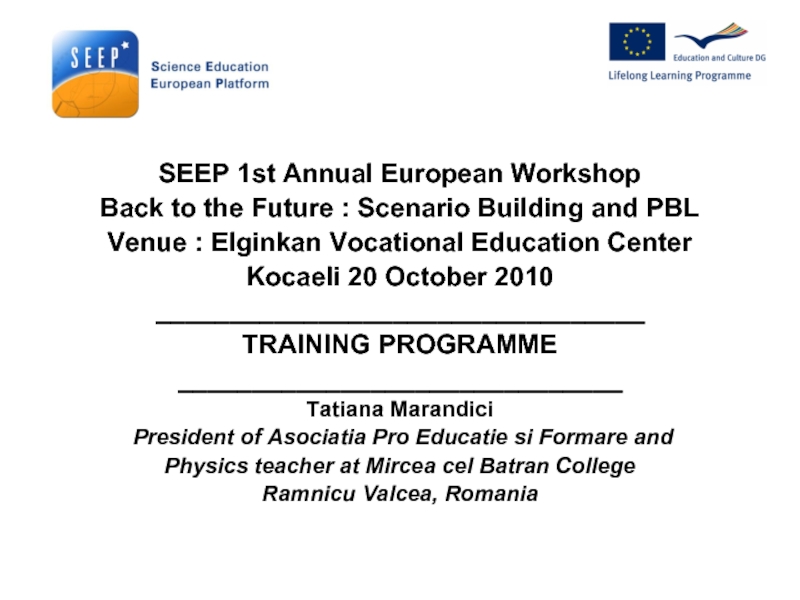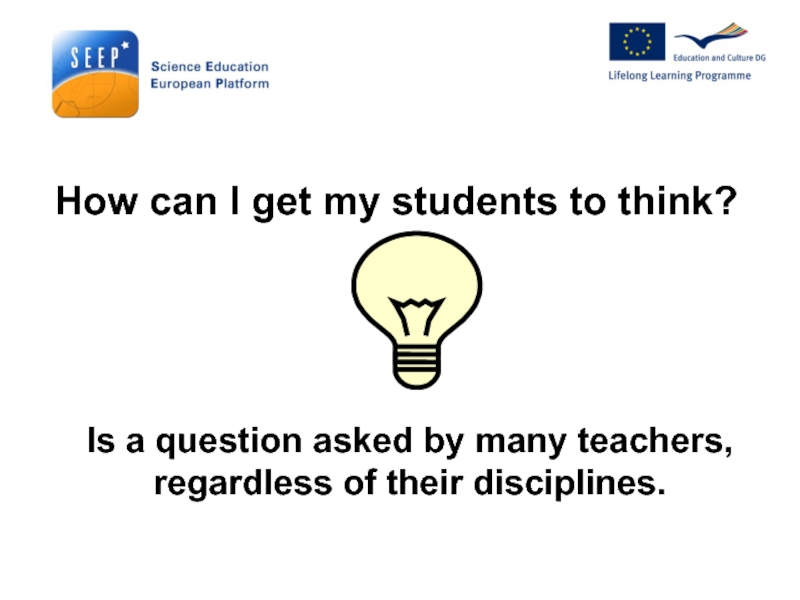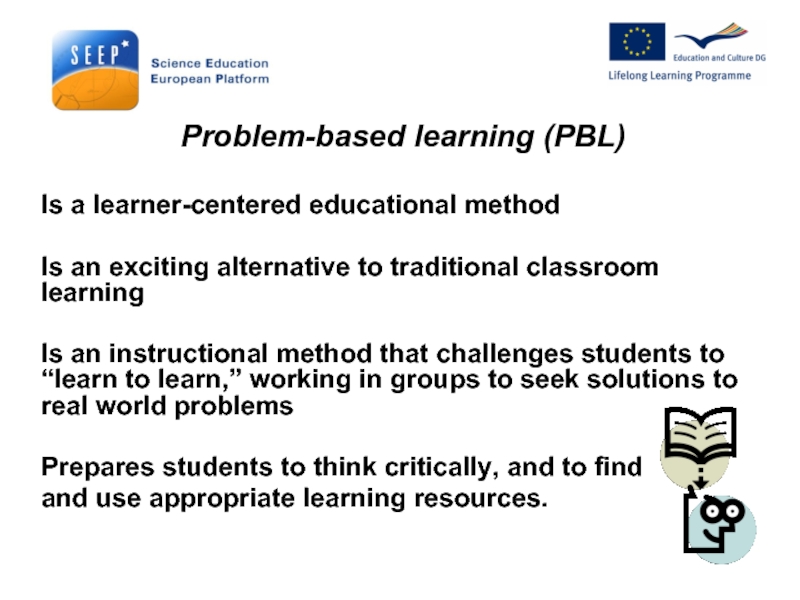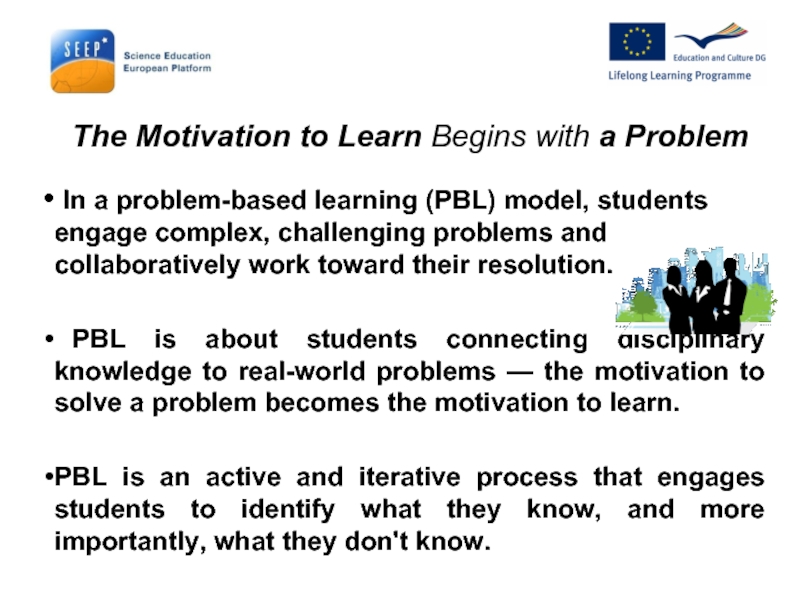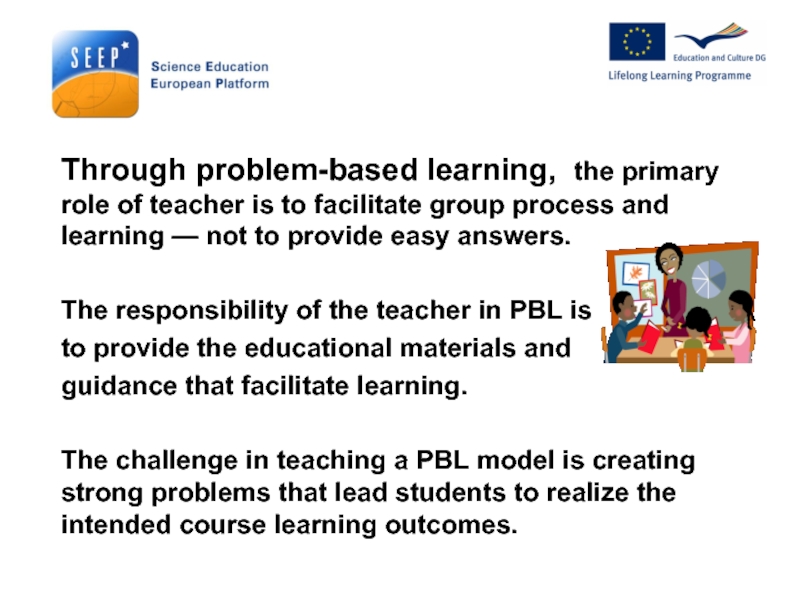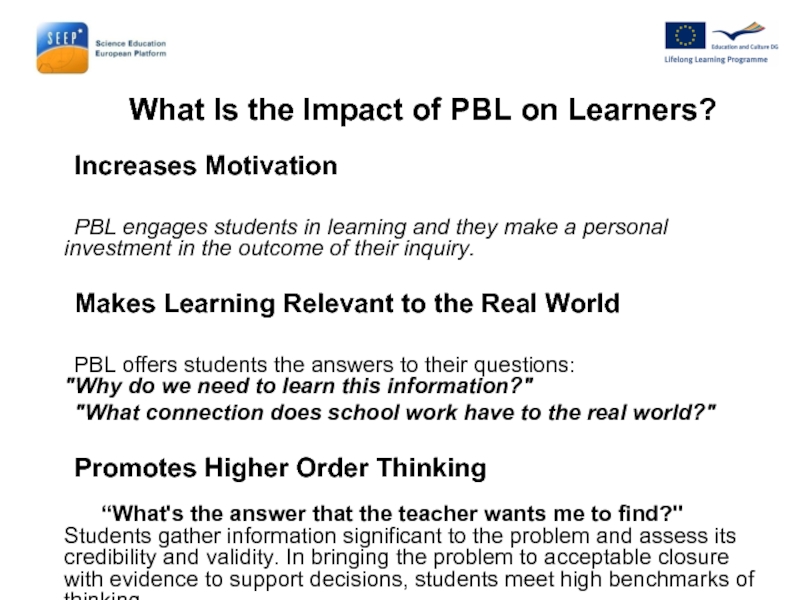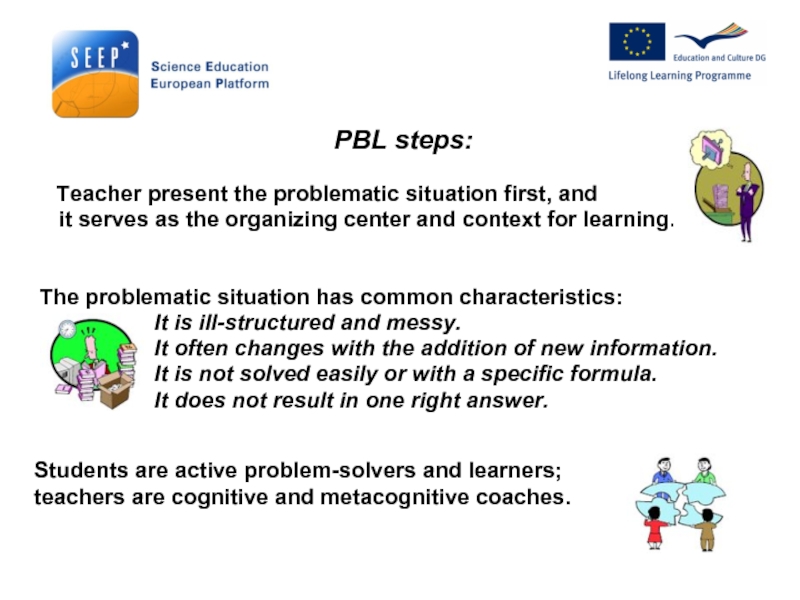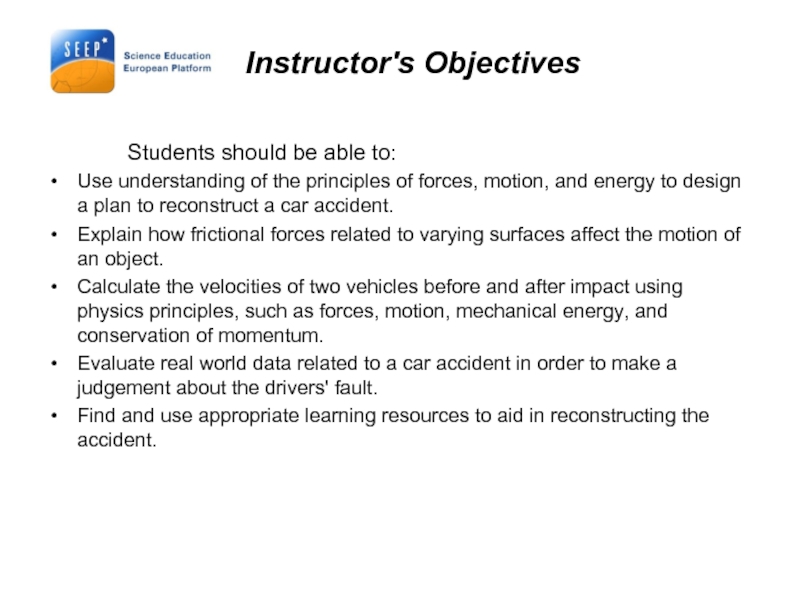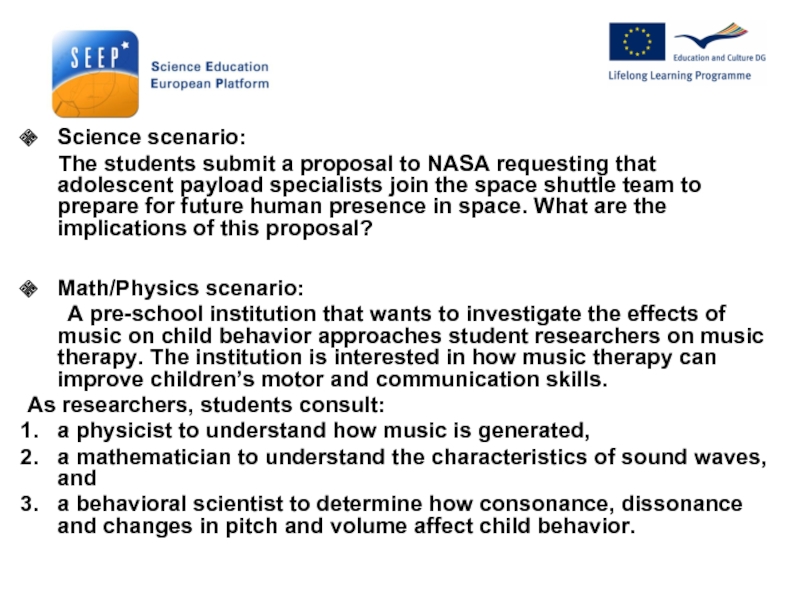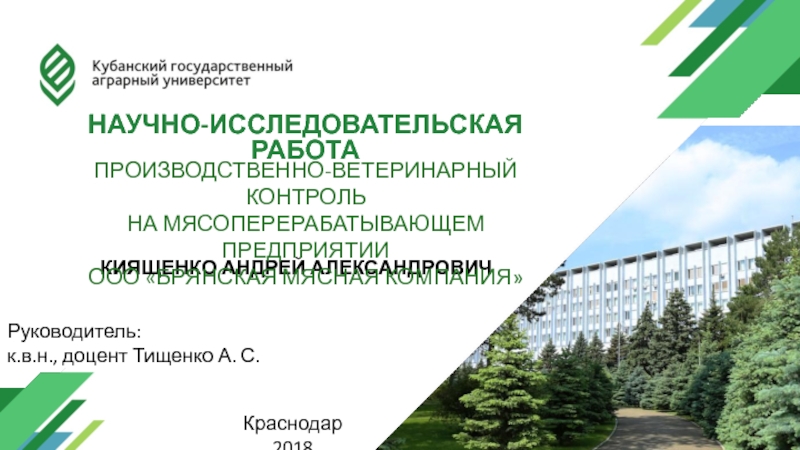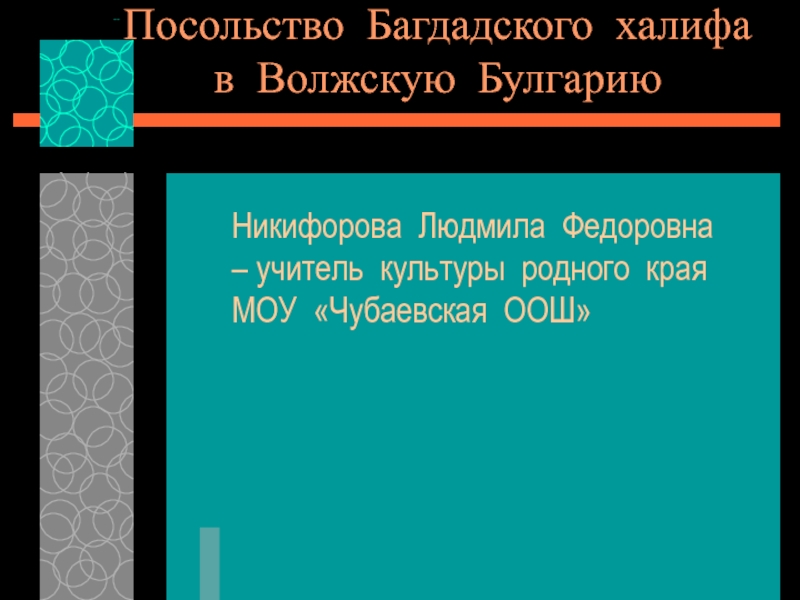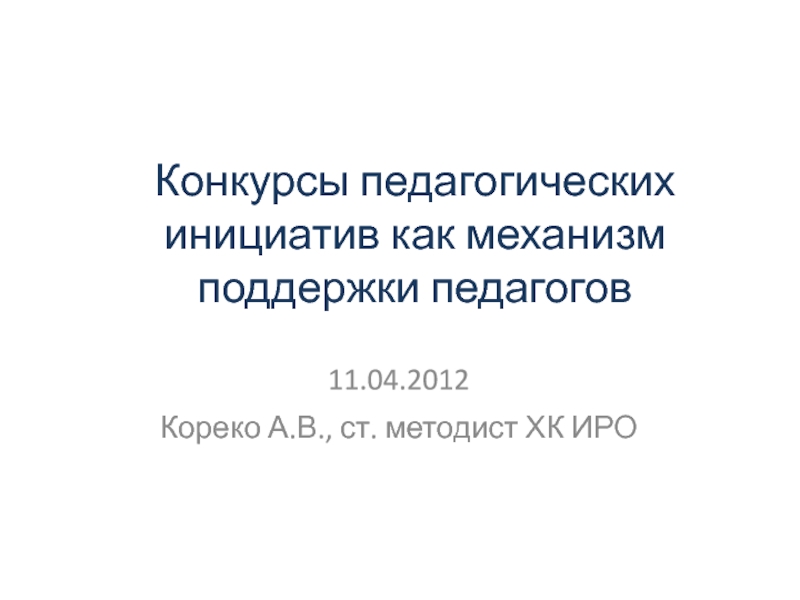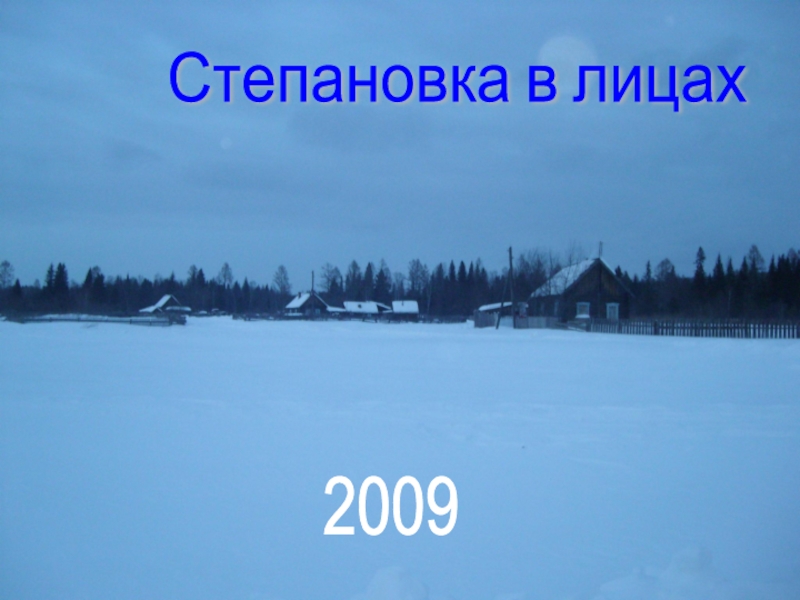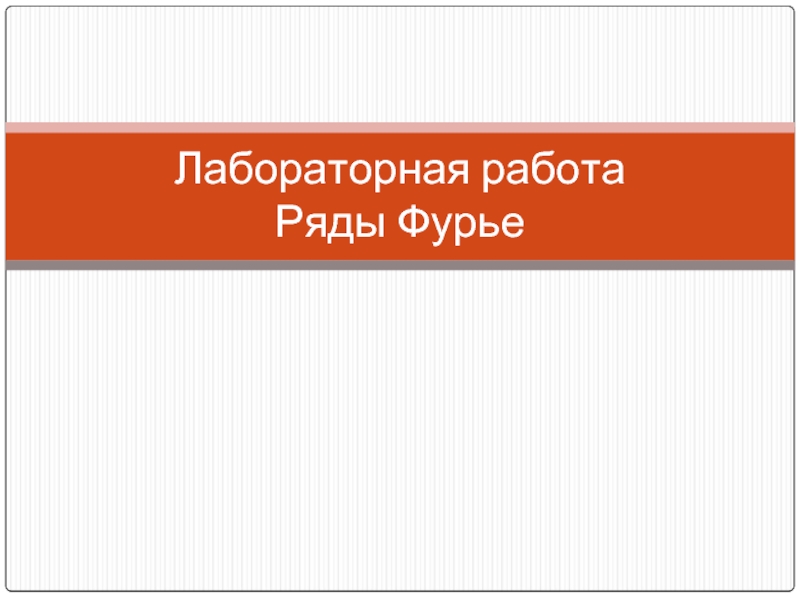and PBL
Venue : Elginkan Vocational Education Center
Kocaeli 20 October 2010
_________________________________
TRAINING PROGRAMME
______________________________
Tatiana Marandici
President of Asociatia Pro Educatie si Formare and
Physics teacher at Mircea cel Batran College
Ramnicu Valcea, Romania
- Главная
- Разное
- Дизайн
- Бизнес и предпринимательство
- Аналитика
- Образование
- Развлечения
- Красота и здоровье
- Финансы
- Государство
- Путешествия
- Спорт
- Недвижимость
- Армия
- Графика
- Культурология
- Еда и кулинария
- Лингвистика
- Английский язык
- Астрономия
- Алгебра
- Биология
- География
- Детские презентации
- Информатика
- История
- Литература
- Маркетинг
- Математика
- Медицина
- Менеджмент
- Музыка
- МХК
- Немецкий язык
- ОБЖ
- Обществознание
- Окружающий мир
- Педагогика
- Русский язык
- Технология
- Физика
- Философия
- Химия
- Шаблоны, картинки для презентаций
- Экология
- Экономика
- Юриспруденция
SEEP 1st Annual European Workshop Back to the Future : Scenario Building and PBL Venue : Elginkan Vocational Education Center Kocaeli 20 October 2010 _________________________________ TRAINING PROGRAMME ______________________________ Tatiana Marandici P презентация
Содержание
- 1. SEEP 1st Annual European Workshop Back to the Future : Scenario Building and PBL Venue : Elginkan Vocational Education Center Kocaeli 20 October 2010 _________________________________ TRAINING PROGRAMME ______________________________ Tatiana Marandici P
- 2. How can I get my students
- 3. Problem-based learning (PBL) Is a
- 4. In PBL, learners are progressively given
- 5. The Motivation to Learn Begins with a
- 6. Through problem-based learning, students can improve their
- 7. Through problem-based learning, the primary role of
- 8. What Is the Impact of PBL on
- 9. PBL steps: Teacher present
- 10. PBL scenarios A Day in the Life
- 11. Instructor's Objectives Students should
- 12. Lt. Henry measured
- 13. PBL scenarios In Hungary a container
- 14. Science scenario: The students
Слайд 2
How can I get my students to think?
Is a question
asked by many teachers, regardless of their disciplines.
Слайд 3Problem-based learning (PBL)
Is a learner-centered educational method
Is an exciting alternative
to traditional classroom learning
Is an instructional method that challenges students to “learn to learn,” working in groups to seek solutions to real world problems
Prepares students to think critically, and to find
and use appropriate learning resources.
Is an instructional method that challenges students to “learn to learn,” working in groups to seek solutions to real world problems
Prepares students to think critically, and to find
and use appropriate learning resources.
Слайд 4 In PBL, learners are progressively given more and more responsibility
for their own education and become increasingly independent of the teacher for their education.
PBL produces independent learners who can continue to learn on their own in life and in their chosen careers.
PBL produces independent learners who can continue to learn on their own in life and in their chosen careers.
Слайд 5The Motivation to Learn Begins with a Problem
In a problem-based
learning (PBL) model, students engage complex, challenging problems and collaboratively work toward their resolution.
PBL is about students connecting disciplinary knowledge to real-world problems — the motivation to solve a problem becomes the motivation to learn.
PBL is an active and iterative process that engages students to identify what they know, and more importantly, what they don't know.
PBL is about students connecting disciplinary knowledge to real-world problems — the motivation to solve a problem becomes the motivation to learn.
PBL is an active and iterative process that engages students to identify what they know, and more importantly, what they don't know.
Слайд 6Through problem-based learning, students can improve their problem-solving skills, research skills,
and social skills.
In addition, PBL benefits students in the following ways:
Increases motivation to learn
Develops critical thinking, writing, and communication skills
Enhances retention of information
Provides a model for lifelong learning
Demonstrates the power of working cooperatively
In addition, PBL benefits students in the following ways:
Increases motivation to learn
Develops critical thinking, writing, and communication skills
Enhances retention of information
Provides a model for lifelong learning
Demonstrates the power of working cooperatively
Слайд 7Through problem-based learning, the primary role of teacher is to facilitate
group process and learning — not to provide easy answers.
The responsibility of the teacher in PBL is
to provide the educational materials and
guidance that facilitate learning.
The challenge in teaching a PBL model is creating strong problems that lead students to realize the intended course learning outcomes.
The responsibility of the teacher in PBL is
to provide the educational materials and
guidance that facilitate learning.
The challenge in teaching a PBL model is creating strong problems that lead students to realize the intended course learning outcomes.
Слайд 8 What Is the Impact of PBL on Learners?
Increases Motivation
PBL engages students
in learning and they make a personal investment in the outcome of their inquiry.
Makes Learning Relevant to the Real World
PBL offers students the answers to their questions: "Why do we need to learn this information?"
"What connection does school work have to the real world?"
Promotes Higher Order Thinking
“What's the answer that the teacher wants me to find?" Students gather information significant to the problem and assess its credibility and validity. In bringing the problem to acceptable closure with evidence to support decisions, students meet high benchmarks of thinking.
Makes Learning Relevant to the Real World
PBL offers students the answers to their questions: "Why do we need to learn this information?"
"What connection does school work have to the real world?"
Promotes Higher Order Thinking
“What's the answer that the teacher wants me to find?" Students gather information significant to the problem and assess its credibility and validity. In bringing the problem to acceptable closure with evidence to support decisions, students meet high benchmarks of thinking.
Слайд 9PBL steps:
Teacher present the problematic situation first, and
it serves as the organizing center and context for learning.
The problematic situation has common characteristics:
It is ill-structured and messy.
It often changes with the addition of new information.
It is not solved easily or with a specific formula.
It does not result in one right answer.
Students are active problem-solvers and learners;
teachers are cognitive and metacognitive coaches.
The problematic situation has common characteristics:
It is ill-structured and messy.
It often changes with the addition of new information.
It is not solved easily or with a specific formula.
It does not result in one right answer.
Students are active problem-solvers and learners;
teachers are cognitive and metacognitive coaches.
Слайд 10PBL scenarios
A Day in the Life of John Henry, A Traffic
Cop
At 13:20 on the last friday in September, 2000 a call was received at the local police station. There had been a serious automobile accident at the intersection of Main Street and State Street, with injuries involved. The cop arrived at the scene and found that two cars had collided at the intersection. Lt. Henry's responsibility is to investigate the accident in order to determine whether one of the drivers (or both) are responsible.
What questions does John Henry have to answer in this investigation?
What measurements does he need to take? What data should he collect?
What other information does he need to record in order to aid the investigation?
What physics principles will John Henry need to use in order to help analyze the data and answer his questions?
If two cars moving at right angles to each other collide, in what direction do you expect the cars to be moving after the collision?
What factors will influence the direction and distance traveled after impact?
At 13:20 on the last friday in September, 2000 a call was received at the local police station. There had been a serious automobile accident at the intersection of Main Street and State Street, with injuries involved. The cop arrived at the scene and found that two cars had collided at the intersection. Lt. Henry's responsibility is to investigate the accident in order to determine whether one of the drivers (or both) are responsible.
What questions does John Henry have to answer in this investigation?
What measurements does he need to take? What data should he collect?
What other information does he need to record in order to aid the investigation?
What physics principles will John Henry need to use in order to help analyze the data and answer his questions?
If two cars moving at right angles to each other collide, in what direction do you expect the cars to be moving after the collision?
What factors will influence the direction and distance traveled after impact?
Слайд 11 Instructor's Objectives
Students should be able to:
Use understanding of
the principles of forces, motion, and energy to design a plan to reconstruct a car accident.
Explain how frictional forces related to varying surfaces affect the motion of an object.
Calculate the velocities of two vehicles before and after impact using physics principles, such as forces, motion, mechanical energy, and conservation of momentum.
Evaluate real world data related to a car accident in order to make a judgement about the drivers' fault.
Find and use appropriate learning resources to aid in reconstructing the accident.
Explain how frictional forces related to varying surfaces affect the motion of an object.
Calculate the velocities of two vehicles before and after impact using physics principles, such as forces, motion, mechanical energy, and conservation of momentum.
Evaluate real world data related to a car accident in order to make a judgement about the drivers' fault.
Find and use appropriate learning resources to aid in reconstructing the accident.
Слайд 12 Lt. Henry measured the skid marks made by both vehicles
prior to impact. The skid marks for vehicle 1 were 20 m in length and for vehicle 2 were m in length. How fast were both cars going just prior to hitting their brakes?
Accident diagram
Слайд 13PBL scenarios
In Hungary a container full of chemical substances has
broken and the environment was affected. Those who suffered the most were plants and animals wich were nearby.What are the main measures in order to help the people and the affected environment?
The students are scientists in a rural county where the wolf population is increasing. What threat do wolf pose to residential areas? What are the implications for action at the local or state level?
The students are scientists in a rural county where the wolf population is increasing. What threat do wolf pose to residential areas? What are the implications for action at the local or state level?
Слайд 14Science scenario:
The students submit a proposal to NASA
requesting that adolescent payload specialists join the space shuttle team to prepare for future human presence in space. What are the implications of this proposal?
Math/Physics scenario:
A pre-school institution that wants to investigate the effects of music on child behavior approaches student researchers on music therapy. The institution is interested in how music therapy can improve children’s motor and communication skills.
As researchers, students consult:
a physicist to understand how music is generated,
a mathematician to understand the characteristics of sound waves, and
a behavioral scientist to determine how consonance, dissonance and changes in pitch and volume affect child behavior.
Math/Physics scenario:
A pre-school institution that wants to investigate the effects of music on child behavior approaches student researchers on music therapy. The institution is interested in how music therapy can improve children’s motor and communication skills.
As researchers, students consult:
a physicist to understand how music is generated,
a mathematician to understand the characteristics of sound waves, and
a behavioral scientist to determine how consonance, dissonance and changes in pitch and volume affect child behavior.
